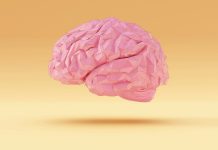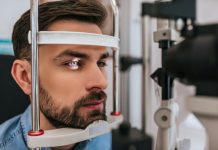
Neuroimaging technologies have revolutionized the way doctors understand and treat brain disorders like dementia and Parkinson’s disease.
These tools allow for detailed views of the brain’s structure and function, providing insights that were unimaginable just a few decades ago.
With advancements in neuroimaging, doctors can diagnose these conditions more accurately and earlier, potentially leading to better outcomes for patients.
The Evolution of Neuroimaging
Traditionally, neuroimaging involved techniques like computed tomography (CT) scans and magnetic resonance imaging (MRI).
While these are still widely used and provide valuable information about the brain’s structure, newer technologies offer deeper insights into how the brain functions and changes over time.
Positron Emission Tomography (PET)
PET scans are highly effective in researching and diagnosing dementia and Parkinson’s disease. This technique uses radioactive substances known as tracers that are injected into the bloodstream.
These tracers travel to the brain and emit positrons, which the scanner detects to create detailed images. For Alzheimer’s disease, PET scans can detect amyloid plaques—a hallmark of the condition—long before symptoms appear.
Similarly, in Parkinson’s disease, PET scans help identify abnormal dopamine activity, which is crucial for an accurate diagnosis.
Functional MRI (fMRI)
Unlike a standard MRI that shows the brain’s structure, fMRI looks at blood flow in the brain to detect areas of activity. This can be particularly useful for understanding how brain regions communicate with each other in patients with dementia and Parkinson’s.
For example, fMRI can show reduced activity in parts of the brain involved in memory and learning in people with Alzheimer’s, even before other symptoms become noticeable.
Diffusion Tensor Imaging (DTI)
DTI is an MRI-based neuroimaging method that helps map and characterize the three-dimensional diffusion of water as a function of spatial location, allowing doctors to visualize the white matter tracts in the brain.
This is particularly important in diseases like Parkinson’s, where changes in white matter can affect brain function. By observing these tracts, doctors can learn more about the disease’s progression and its effects on motor and cognitive functions.
Single-Photon Emission Computed Tomography (SPECT)
Similar to a PET scan, SPECT involves injecting a radioactive tracer into the bloodstream. However, SPECT uses gamma rays and provides different information.
It is particularly useful for assessing blood flow in dementia and can show how blood flow changes as the disease progresses.
Magnetoencephalography (MEG)
MEG is a technique that measures the magnetic fields produced by neural activity. It provides extremely precise timing information and can detect abnormalities in how brain waves move, which is helpful for assessing cognitive functions in Alzheimer’s patients.
The Impact of Advanced Neuroimaging
These advanced neuroimaging technologies offer several key benefits:
- Early Diagnosis: By identifying the signs of dementia and Parkinson’s before symptoms worsen, these tools can lead to early intervention.
- Treatment Monitoring: Neuroimaging can help doctors assess how well a treatment is working, adjusting strategies as needed.
- Improved Understanding: These technologies provide insights into how these diseases develop and affect the brain, leading to better-targeted therapies.
Challenges and Future Directions
Despite the advances, there are challenges. Neuroimaging can be expensive and is not always accessible in all healthcare settings. There is also the need for ongoing research to interpret complex imaging results accurately.
As research continues, the future of neuroimaging in dementia and Parkinson’s looks promising. With every technological advance, doctors are better equipped to understand these complex diseases, leading to more effective treatments and improved patient care.
The hope is that these advances will not only help manage symptoms but eventually slow or even stop the progression of these debilitating conditions.
If you care about dementia, please read studies about Vitamin B9 deficiency linked to higher dementia risk, and flavonoid-rich foods could help prevent dementia.
For more information about brain health, please see recent studies that cranberries could help boost memory, and how alcohol, coffee and tea intake influence cognitive decline.
Copyright © 2024 Knowridge Science Report. All rights reserved.



